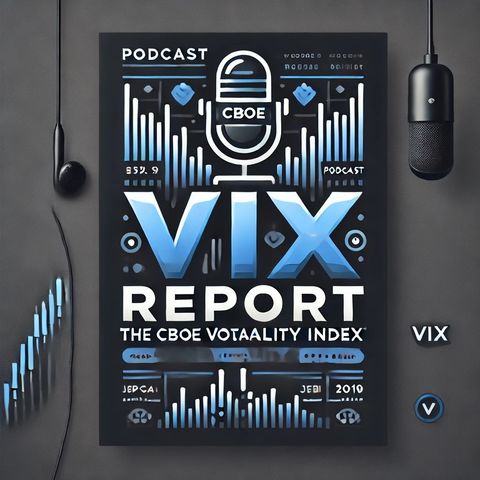Uncovering the Secrets of the "Fear Index": Understanding the Cboe Volatility Index (VIX) for Savvy Market Navigation

Iscriviti gratuitamente
Ascolta questo episodio e molti altri. Goditi i migliori podcast su Spreaker!
Scarica e ascolta ovunque
Scarica i tuoi episodi preferiti e goditi l'ascolto, ovunque tu sia! Iscriviti o accedi ora per ascoltare offline.
Uncovering the Secrets of the "Fear Index": Understanding the Cboe Volatility Index (VIX) for Savvy Market Navigation
Questa è una trascrizione generata automaticamente. Si prega di notare che non è garantita la completa accuratezza.
Descrizione
The Cboe Volatility Index (VIX), often dubbed the "fear index," functions as a barometer for measuring the expected volatility of the S&P 500 Index over the next 30 days. This...
mostra di piùCurrently, real-time data for the VIX, such as its sale price and percent change, are available through the Cboe website and other financial data platforms. These dynamic values provide critical insights for market participants. However, since real-time updates are beyond the scope of static sources, investors must refer to these platforms for the most up-to-date information.
Several key factors influence the VIX Index and its percent change. Foremost among these is **market sentiment**, characterized by the inverse relationship between the VIX and the S&P 500 Index. When the S&P 500 experiences gains—indicative of positive market sentiment—the VIX generally declines. Conversely, during market downturns, the VIX tends to rise, reflecting increased expected volatility.
**Economic and geopolitical events** also play a significant role. Important economic announcements, such as changes in interest rates, GDP reports, and employment data, can create uncertainty, causing spikes in the VIX. Similarly, geopolitical tensions, conflicts, and other global disruptions contribute to market instability, leading to elevated VIX levels.
The **options market** is another determinant. The VIX is computed from the prices of S&P 500 Index options, and fluctuations in options trading dynamics—marked by shifts in demand for call and put options—can affect the VIX index.
Another essential component is the **volatility risk premium**. The VIX often trades at a premium over realized market volatility, reflecting the risk participants are willing to pay to hedge against anticipated market movements. Changes in this risk appetite, driven by market sentiment and expectations, can cause the VIX to oscillate.
In terms of trends, the VIX exhibits **mean reversion** behavior. This signifies that despite short-term fluctuations, the VIX tends to move towards a long-term average over time. This characteristic influences the VIX futures term structure and is a crucial factor for market participants employing term structure trading strategies.
Moreover, market participants deploy the VIX for several **hedging and trading strategies**. These include using the VIX to
Informazioni
| Autore | QP-1 |
| Organizzazione | William Corbin |
| Sito | - |
| Tag |
Copyright 2024 - Spreaker Inc. an iHeartMedia Company
